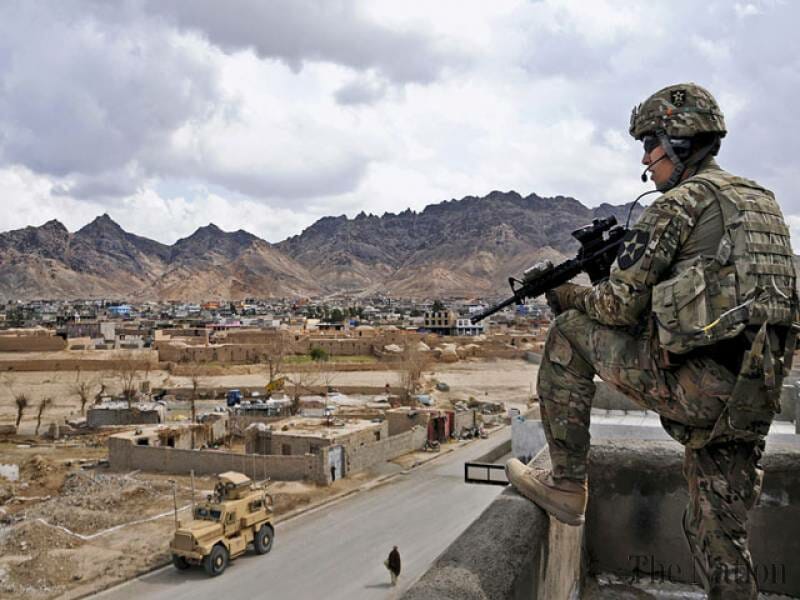Peter LaVenia – Trump’s recent decision to add troops in Afghanistan has nothing to do with combating terrorism (or mining mineral resources, or confusing militants as to when the US military might finally leave), no matter what the endless stream of pundits and think-pieces have argued since it was announced. After 16 years of occupation the Taliban control 48 of nearly 400 administrative units, the Islamic State has established a foothold, the United States supplies almost the entirety of the military and civilian budget, the Afghan military is incapable of functioning without US support, opium production has increased so that Afghanistan supplies 77% of the world’s heroin, and by the end of the next fiscal year the total cost of the 16-year Afghan war alone will be $1 trillion. Afghanistan and Pakistan have engaged in their worst border clashes in years as militants shift back and forth between both countries at will. Chinese troops operate openly in the country and conduct joint security exercises with Afghan forces. Russia is now debating a military intervention, ostensibly to counter the growing Taliban threat.
Trump, like Obama, had promised on the campaign trail to end the war. The war itself is deeply unpopular, and his stance on ending the war (like Obama’s before it) may have helped secure his victory in crucial states with high casualty rates. Now less than a year into his term Trump has decided to increase troop levels by 3,900, which his generals had requested earlier this summer. Since it is unlikely to help his dismal popularity ratings, what rationale would he have to do so? The usual suspects – combating terrorism and stabilizing the Afghan state – collapse quickly with even cursory investigation. After 16 years the Afghan government is little more than a puppet state, and after spending nearly a trillion dollars the United States clearly has no desire to build an economy and social programs that would modernize the country and loosen the reactionary social relations that give the Taliban and IS strength. The plan itself is one simply recycled from the early Obama era when Joe Biden was its pitchman.
No doubt this is, in good part, due to the inertia of the American empire. Representatives of the military-industrial complex have done very well selling the War on Terror; the ruling class – or the Power Elite if you prefer – seem to have a consensus that the war must continue not only to aid their own pockets and to give the military a place to test its new toys, but also because the empire should not voluntarily leave a place once it has been conquered. While it is true that Trump has staffed his administration at higher levels with generals, the national-security state’s apparatus seems to be able to control policy much like previous regimes. It is merely more visible because Trump’s unpredictable nature has caused the apparatus to show its face more often than it likes, and the generals have been more willing to accept roles with overt policy-making implications that in previous eras would have been done behind closed doors.
The real reason is that Afghanistan is a forward operating base for the US military in Asia in its attempts to counter China’s inevitable rise, whatever the official justifications for maintaining troops there are. China’s $900 billion Belt and Road Initiative aims to lay the trans-continental infrastructure to allow its transition from great power to world-hegemon. Its projected land routes go north around Afghanistan and south through Pakistan. Given that the United States recently began a “Pivot to Asia” strategy aimed at building an economic and military partnership with Asian states to balance China, and that the economic side of that – the Transpacific Partnership – was temporarily defeated, there has been an increased emphasis on its military part by the national security state.
In addition, India, alarmed at China’s rise and open provocation on its eastern flank, has already signed an historic agreement to allow US warships and aircraft to use Indian bases for “refueling, repair, and other logistical purposes.” The United States conducted joint naval war games with India and Japan this summer. It is clear that the United States is turning towards India at the same time as Pakistan moves closer to China’s sphere of influence. China has signaled its displeasure at these containment efforts, even as it expands its military footprint into the South China Sea and Africa. Given that Afghanistan borders the northern and southern route of China’s New Silk Road, and India has openly aligned itself with the United States, what is the likelihood of American troops leaving Afghanistan?
Because of this, it is more likely we will see an open-ended presence of the US military in Afghanistan than troops leaving for good at any point in the short or medium-term. Indeed, there is no domestic political group that will force the war to end. The anti-war Left in the United States is virtually non-existent outside of a small fraction of consistently anti-imperialist groups. Bush and Obama’s presidencies proved the bulk of protesters over the last decade to be anti-Republican Wars, but quite happy to ignore the imperial actions of a Democrat. The litmus test for any leftist movement going forward has to be its stance on foreign policy and consistent, unwavering anti-imperialism. Until then the rationale for keeping troops in Afghanistan is just too great for the American empire as it looks to balance the rise of China and to shore up alliances with regional powers like India. America’s longest war will get that much longer, and unfortunately there’s not much yet we are likely to do about it.
Courtesy: Daily Nation







